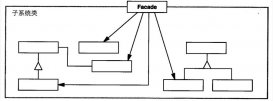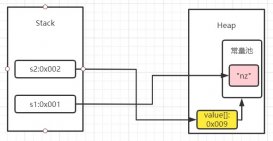1.java提供的默认list排序方法
主要代码:
|
1
2
3
4
5
6
7
8
9
10
11
12
13
14
15
16
17
18
|
List<String> list = new ArrayList();list.add("刘媛媛");list.add("王硕");list.add("李明");list.add("刘迪");list.add("刘布");//升序Collections.sort(list,Collator.getInstance(java.util.Locale.CHINA));//注意:是根据的汉字的拼音的字母排序的,而不是根据汉字一般的排序方法for(int i=0;i<list.size();i++){ System.out.print(list.get(i));}System.out.println("");//降序Collections.reverse(list);//不指定排序规则时,也是按照字母的来排序的for(int i=0;i<list.size();i++){ System.out.print(list.get(i));} |
输出结果:
李明刘布刘迪刘媛媛王硕
王硕刘媛媛刘迪刘布李明
2.自定义的排序规则:
第一种是model类实现Comparable接口,重写重写int compareTo(Object o)方法
model类:
|
1
2
3
4
5
6
7
8
9
10
11
12
13
14
15
16
17
18
19
20
21
22
23
24
25
26
27
28
29
30
31
32
33
34
35
36
37
38
39
40
41
42
43
44
45
|
public class StudentDTO implements Comparable{ private String name; private int age;public String getName(){ return name;}public void setName(String name){ this.name = name;}public ObjType getType(){ return type;}public void setAge(int age){ this.age= age;}@Overridepublic int compareTo(Object o){ StudentDTO sdto = (StudentDTO)o; int otherAge = sdto.getAge(); // note: enum-type's comparation depend on types' list order of enum method // so, if compared property is enum-type ,then its comparationfollow ObjEnum.objType order return this.age.compareTo(otherAge);}} 主方法: public static void main(String[] args){ List<StudentDTO> studentList = new ArrayList(); StudentDTO s1 = new StudentDTO (); s.setName("yuanyuan"); s.setAge(22); studentList.add(s1); StudentDTO s1 = new StudentDTO (); s.setName("lily"); s.setAge(23); studentList.add(s2); Collections.sort(studentList); //按照age升序 22,23, Collections.reverse(studentList); //按照age降序 23,22 } |
第二种是比较器类实现Comparator接口,重写int compare(Object o1, Object o2)方法;
model类:
|
1
2
3
4
5
6
7
8
9
10
11
12
13
14
15
16
17
18
19
20
21
22
23
24
25
26
27
28
29
30
31
32
33
34
35
36
37
38
39
40
41
42
43
44
45
46
47
48
|
public class StudentDTO implements Comparable{ private String name; private int age; public String getName() { return name; } public void setName(String name) { this.name = name; } public ObjType getType() { return type; } public void setAge(int age) { this.age= age; }} 比较器类:class MyCompartor implements Comparator{ @Override public int compare(Object o1, Object o2) { StudentDTO sdto1= (StudentDTO )o1; StudentDTO sdto2= (StudentDTO )o2; return sdto1.getAge.compareTo(stdo2.getAge()) }} 主方法:public static void main(String[] args){ List<StudentDTO> studentList = new ArrayList(); StudentDTO s1 = new StudentDTO (); s.setName("yuanyuan"); s.setAge(22); studentList.add(s1); StudentDTO s1 = new StudentDTO (); s.setName("lily"); s.setAge(23); studentList.add(s2); MyComparetor mc = new MyComparetor(); Collections.sort(studentList,mc); //按照age升序 22,23, Collections.reverse(studentList,mc); //按照age降序 23,22 } |
附注:
1.对于数组的排序方法如下:
|
1
2
3
|
String[] names = {"王林", "杨宝", "李镇", "刘迪", "刘波"}; Arrays.sort(names, com.ibm.icu.text.Collator.getInstance(com.ibm.icu.util.ULocale.SIMPLIFIED_CHINESE));//升序; System.out.println(Arrays.toString(names)); |
2.对于汉字的排序:可以尝试使用ICU4J会得到更好的结果,特别是姓为某些生僻字的时候,
用com.ibm.icu.text.Collator替换java.text.Collator,用com.ibm.icu.util.ULocale替换java.util.Locale
3.对于枚举类型的enum1.compareTo(enum2)是按照枚举类型值在定义时的先后顺序比较的,越后面的越大,
而不是按照值的字母先后顺序比较的。
以上所述是小编给大家介绍的Java Collections.sort()实现List排序的默认方法和自定义方法,希望对大家有所帮助,如果大家有任何疑问请给我留言,小编会及时回复大家的。在此也非常感谢大家对服务器之家网站的支持!
原文链接:http://www.cnblogs.com/symbol8888/archive/2017/06/15/7017653.html















